Life and Times of Ephedra — The Quest for a Scientific Use of an Ancient Remedy and TCM’s Long road to modernization
Written by Jack Linzhou Xing
Published on 18/05/2021
In June 1935, a famous medical journal in Shanghai, Yijie Chunqiu (醫界春秋, “Annals of medicine”) published a short essay called “Mahuang zhuan” (麻黃傳, “A biography of ephedra”).[1] Said mahuang is a herb that has for centuries been used in traditional Chinese medicine (TCM). A shrub native to China, mahuang comprises several species belonging to the ephedra genus. Till this day, mahuang has been frequently administered in TCM to treat common cold or flu, and during the recent COVID-19 pandemic, there was even a high-profile patented TCM drug called lianhua qingwen capsules (蓮花清瘟膠囊) for treating the viral disease. Ephedra was a significant ingredient of these capsules.
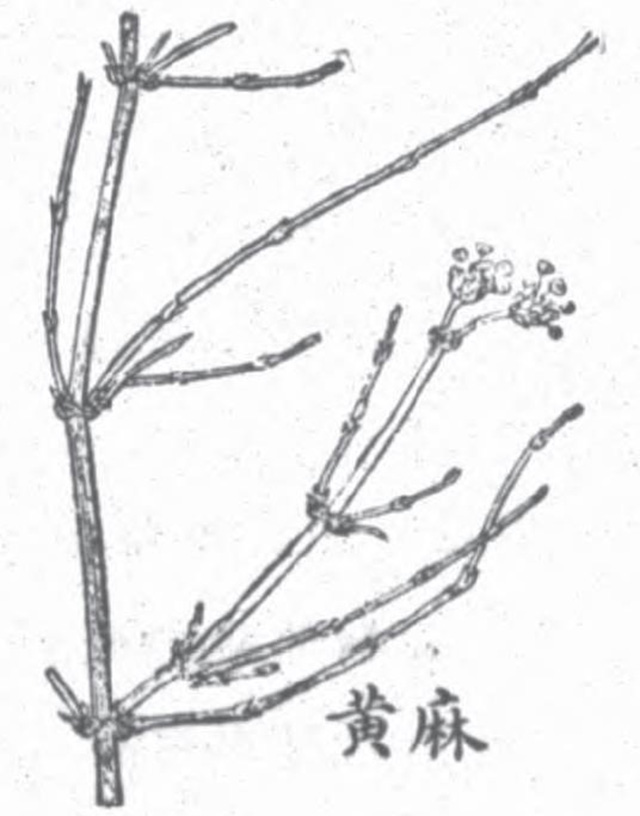

One may be well aware of artemisinin, a drug extracted from a Chinese wormwood (herb). However, in the 1920s, more than half a century before Tu Youyou (屠呦呦)’s 1972 discovery of artemisinin — for which Tu won the 2015 Nobel Prize in Physiology/Medicine — scientists had already isolated an alkaloid called ephedrine from the Chinese herb mahuang, and used the alkaloid to develop a pharmaceutical to treat asthma. While Tu’s Nobel Prize may have helped to spread the story of artemisinin, ephedrine remains mostly buried in archives and has seldom been mentioned. Using the lens of a short biography on ephedra called Mahuang zhuan, this essay not only uncovers the history of the herb, but also illuminates TCM’s long struggle to modernize in the 20th century.

The author of “Mahuang zhuan” was Zhu Shoupeng (朱壽朋, 1895–1961). He was a self-taught doctor who only began to study Chinese medicine when he was 24 years old. Even though modern historiography of Chinese medicine seldom mentions his name, he certainly had a reputation among Shanghai’s medical circle during the 1930s. Zhu served as an editor of the journal Yijie Chunqiu, and was the director for student affairs in a vocational school called the School for Reviving the Chinese Medicine. Both the journal and the school were founded by famous doctors of Chinese medicine of the time. Zhu published widely on Chinese medicine, herbal drugs, as well as Japanese kampo medicine in Yijie Chunqiu. He was also a proponent of the initiative to modernize Chinese medicine, believing that modern science was the best way to rejuvenate the ancient art of healing.
“Mahuang zhuan” began by introducing the basic properties of ephedra: it has a greenish stem and red roots. It was generally known as mahuang but had three other colloquial names. The biography personified ephedra as the athlete of Chinese herbs — with an extremely modest stature but upholding a high standard of integrity. Here Zhu punned on the Chinese character jie (節), which refers to both nodes on a plant and a person’s moral integrity. Ephedra was said to have the special capability to dispel wind and disperse a cold, with its therapeutic effect traveling through the skin and hair (which, in TCM theory, are related to the lungs).
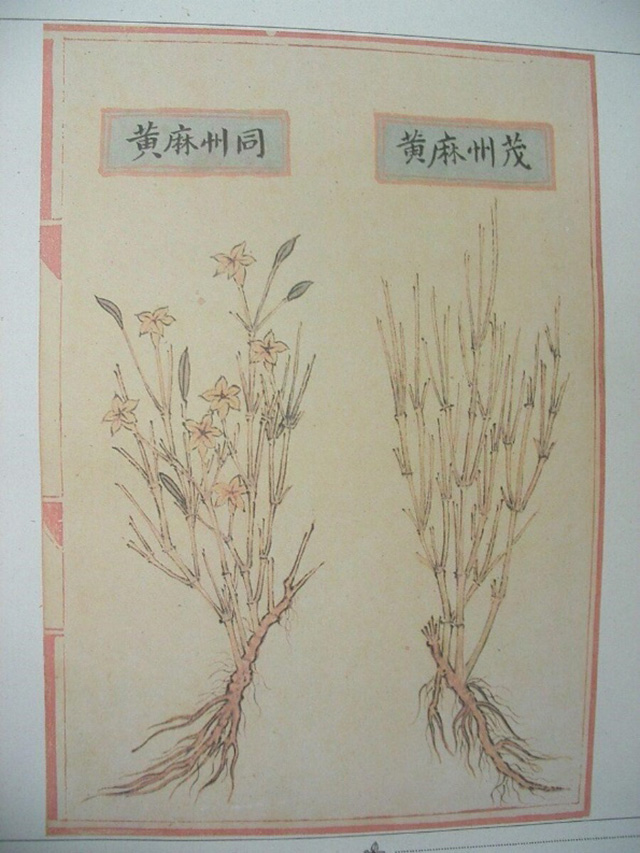
According to the biography, the significance of ephedra in Chinese medicine began with Zhang Zhongjing (張仲景), a famous physician who lived in the second century and was later worshipped during late imperial China as a medical sage. Zhang’s best known contribution was his Treatise on Cold Damage Disorder, a work based on his experience in treating epidemic diseases in his time. After the 11th century, the book became a medical classic and an important source of reference for a mainstream medical school of thought in China. The work recorded 113 formulae in total, and among the main formulae targeting the “greater yang disorder,” ephedra featured significantly. Zhu gave in the biography of ephedra a short analysis of several prominent formulae, asserting that ephedra was the key to determining whether a patient would live or not. It could expel evil and thus support the vital. Ephedra continued to be a powerful remedy in doctors’ therapeutic repertoire. From the Daoist doctor Sun Simiao (孫思邈) in the Tang dynasty (7th century) to medical masters of the Jin Dynasty (12th to early 13th century), a number of their formulae contained ephedra.
However, Zhu lamented the dramatic decline of ephedra — caused by the two other formulae, chonghe tang (flush and harmonize decoction) and xiangsu yin (cyperus and perilla drink), becoming increasingly popular for treating disorders caused by cold wind. Zhu did not specify the exact time that this happened but it could be deduced: both those formulae first appeared in the Song Dynasty (11th century) and were further refined by Jin-Yuan medical masters. Since, some medical masters started to change their approach to healing. From their point of view, the cold damage tradition was applying too many strong, potent remedies against severe disorders; they proclaimed that, instead, doctors should use more nourishing substances to enhance the vitality of the body. This paraphrase of their medical doctrine may be a simplistic, but the preference for nourishing over harsh remedies left a strong legacy in the medical art during late imperial China, and could thus be considered responsible for the decline of ephedra usage.

Wang Ang (汪昂, 1615–1694), who published several popular works on materia medica and medical formulae, also advised against prescribing high dosages of ephedra. Others heeded his suggestion, even going a step further to reduce the amount of ephedra in their prescriptions. Where it was used, it would first be roasted with honey to harmonize its strong effect and drying property (according to Zhu, however, doing so would further reduce ephedra’s effectiveness). This might have quickened ephedra’s fall into obscurity, until it was finally resurrected by modern science.
There was a switch in tone in the last part of “Mahuang zhuan” from frustration to delight. Even though ephedra had lost favor with people in China, it gained favor abroad. Several big pharmaceutical companies in Japan, the U.S., and Germany made new use of ephedra to produce a modern pharmaceutical call ephedrine. Zhu saw this as a new opportunity for what he called the “modest herb in the wild and cheap remedy in the doctor’s cabinet.” Zhu was full of praise for ephedra — “It successfully leaps through the dragon’s gate and freely swims in the sea of chemistry” — calling it a “true pioneer in the evolution of Chinese medicine.”
The following year, Zhu published another essay on mahuang in Yijie Chunqiu entitled “Song mahuang chuyang xu” (送麻黃出洋序, which translated into “A farewell note to mahuang before its journey abroad”).[2] The essay was an imitation of a well-known genre of China literature, where a man would write a poetic farewell to a departing (often literati) friend, so what Zhu did here was to equate mahuang to a talented scholar (who was unappreciated by his contemporaries). Zhu suggested that mahuang find elsewhere (i.e., abroad) those (i.e., foreign scientists who studied Chinese medicine and herbs seriously) who would be wise enough to not only take notice but also appreciate its worth, and turn it into fine products. Zhu asked his colleagues in the medical community not to take this essay lightly; he was making a serious argument concerning the Chinese medical community, that it should learn from other studies from both the East (Japan) and the West.
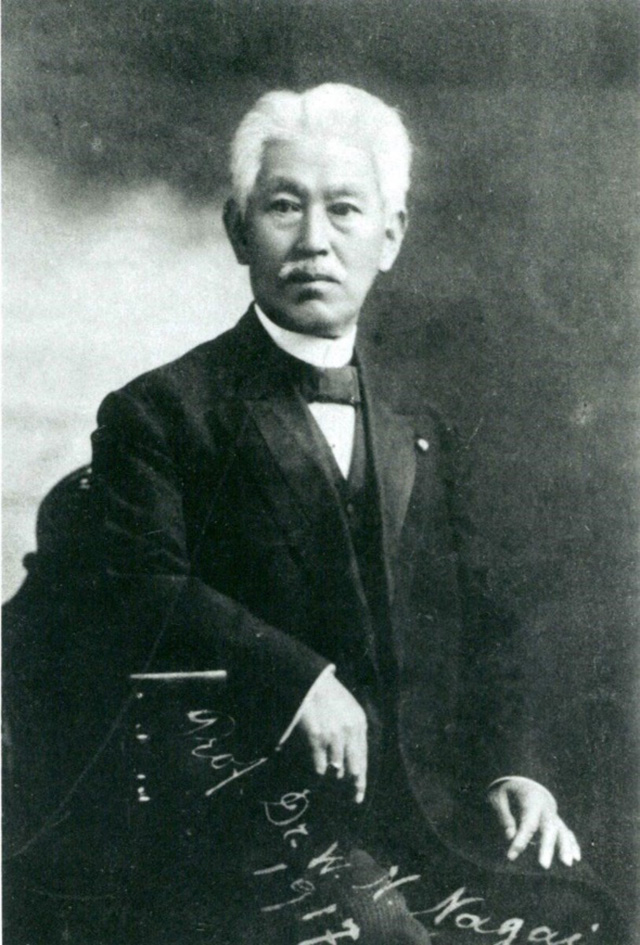
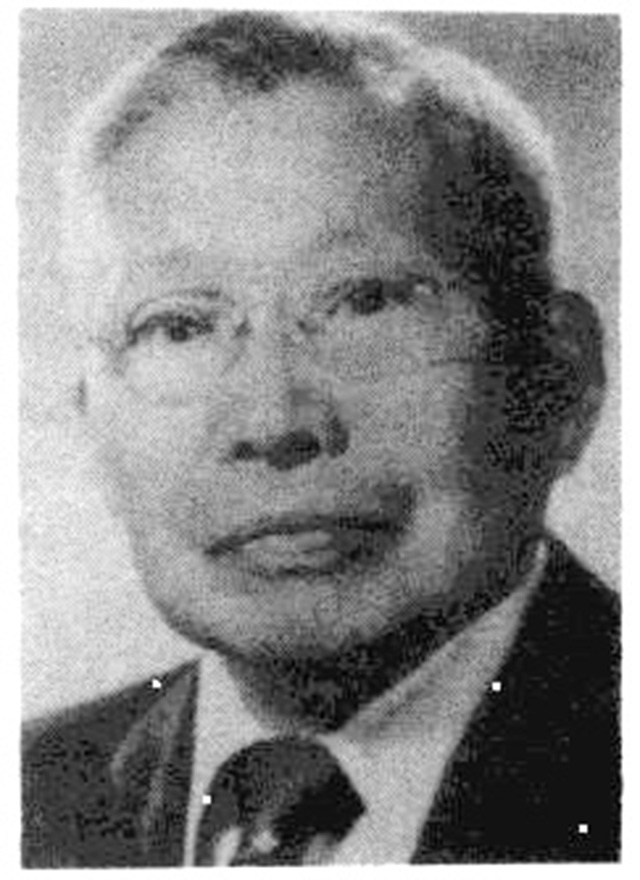
In “Mahuang zhuan,” Zhu provided an appendix enumerating six ephedrine pharmaceuticals made by foreign companies, but did not detail how their scientific discoveries had been achieved. Fortunately, this part of the history was told many times by other sources in the 1930s. The story began with a certain Nagajoshi Nagai (長井長義, 1845 – 1929), a German-trained Japanese pharmacologist, who first isolated ephedrine as the active ingredient of ephedra in 1887. However, he and a colleague concluded that the alkaloid was highly toxic. It was not until 1913 that two other Japanese scientists found that ephedrine had similar effects to adrenaline and tyramine, and could be used as a sympathomimetic agent to treat asthma. Such early research publications on ephedrine were either in Japanese or in German. In other words, ephedrine’s spread to the anglophone world was limited. Another decade would go by before the medicinal use of ephedrine was discovered by Chinese scientist, Ko Kuei Chen (陳克恢).[3]
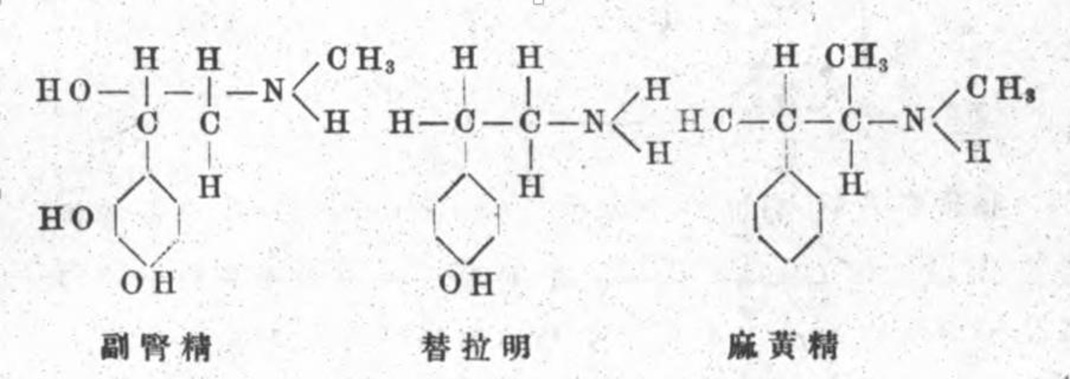
Ko Kuei Chen (1898–1988) was born in Jiangsu province. He was educated first at Tsinghua College in Beijing, then in the U.S. After earning his PhD from the University of Wisconsin-Madison in 1923, he returned to China and joined the Peking Union Medical College, a Rockefeller-funded institution in China. Chen along with an American colleague by the name Carl F. Schmidt[4] decided to investigate Chinese herbs for potentials to be developed into pharmaceuticals. Building on Nagai’s early work on ephedrine, Chen and Schmidt reduced the dose of ephedrine and found that its effects were comparable to or even more remarkable than adrenaline for treating asthma. Their work laid a significant foundation for the commercialization of ephedrine. Chen was then hired by Eli Lilly and Company in the U.S. to develop ephedrine sulfate as a new drug for asthma. A German company also manufactured a similar drug called Racem Ephedrin.
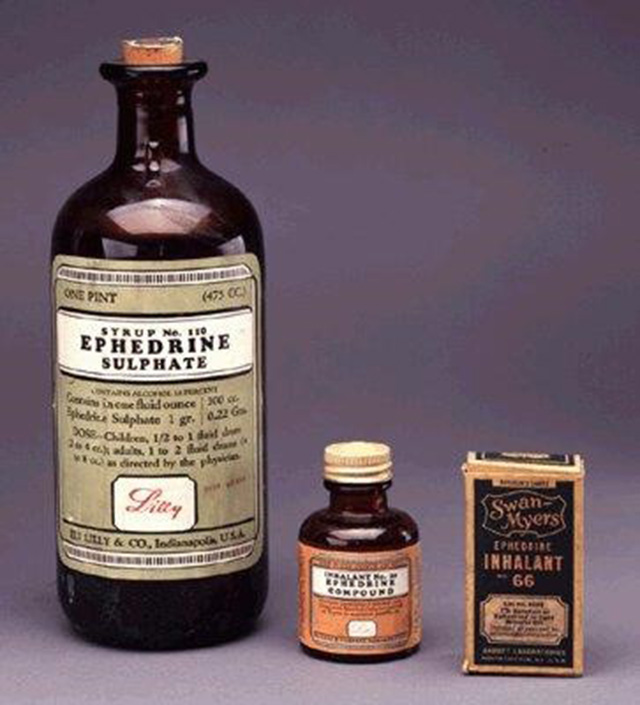
The study and the drug were soon made known to China within the 1930s. Chinese medical intellectuals were thrilled to learn that not only was the drug developed from a Chinese herb, but the scientist who conducted the research was also Chinese. This was a time when practitioners of Chinese medicine struggled with its legitimacy and survival in the public health system of the now modern nation-state.[5] Both consensus and disputes abounded regarding how and where to find a niche for Chinese medicine in modern societies. Fortunately, a truce was reached — even the most radical opponents and the keenest proponents of Chinese medicine agreed on their approach toward Chinese drugs: controversies over their scientificity notwithstanding, TCM drugs did work; moreover, proponents of TCM wanted to uphold the notion of Chinese medicine being a “national essence.” At the same time, Western- and Japanese- trained scientists were also interested in making sense of TCM drugs and their efficacy using modern bio-scientific terms. Ephedrine, as one of the first pharmaceuticals developed from a Chinese herb, made a strong case for such scientific studies of traditional herbs.
Ephedrine had two names in Chinese: one, aifudelin (愛夫得靈), which was a transliteration of “ephedrine,” and two, mahuang jing (麻黃精), which translated into “essence of mahuang.” As unexpected as it might have been, this “essence” was precisely what modern science was able to successfully extract and preserve from a Chinese herb. More importantly, this successful development of ephedrine opened the door to modern research and development on TCM — using traditional medicinal substances to produce what the Chinese call “refined Chinese drugs.” This new chapter of TCM, which began in the 20th century, is continuing strong today.
Footnotes
- Zhu Shoupeng, “Mahuang zhuan,” Yijie chunqiu, no. 102 (1935): 20–23.
- Zhu Shoupeng, “Song mahuang chuyang xu,” Yijie chunqiu, no. 112 (1936): 2426.
- M. R. Lee, “The history of Ephedra (ma-huang),” The Journal of the Royal College of Physicians of Edinburgh 41 (2011): 78–84.
- For the life and work of Carl F. Schmidt, see George B. Koelle, Carl Frederic Schmidt 1893–1988: A Biographical Memoir (Washington D. C.: National Academies Press, 1995).
- Sean Hsiang-lin Lei, Neither Donkey nor Horse: Medicine in the Struggle over China’s Modernity (Chicago: Chicago University Press, 2014).
